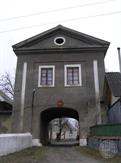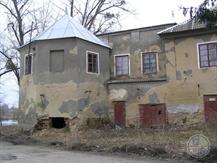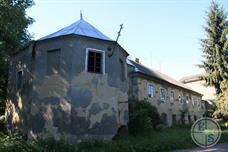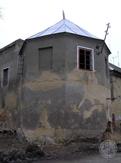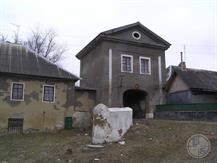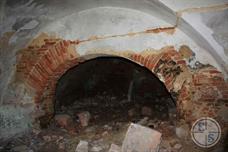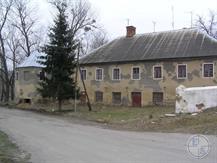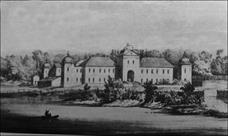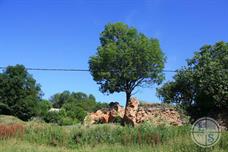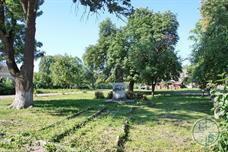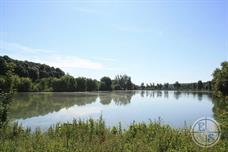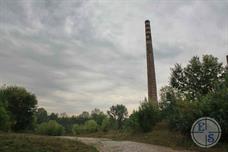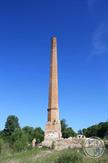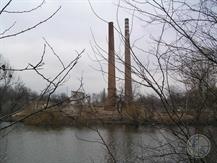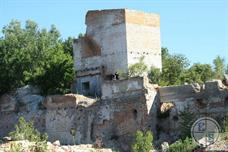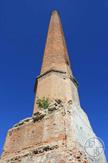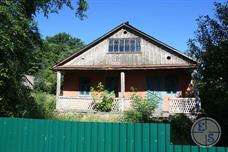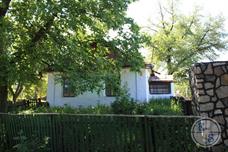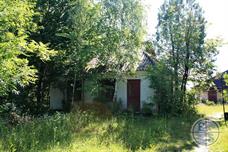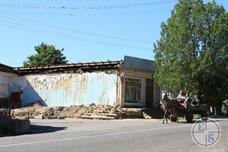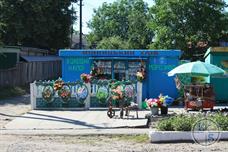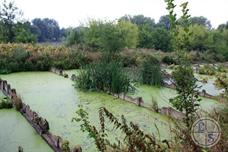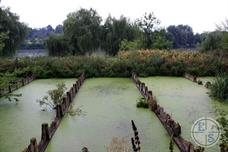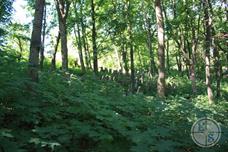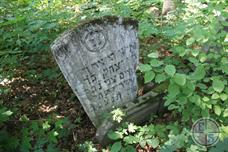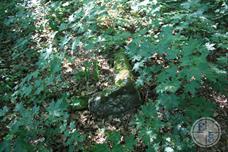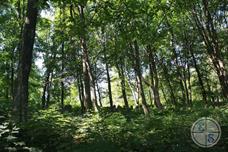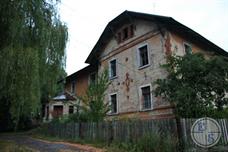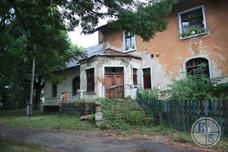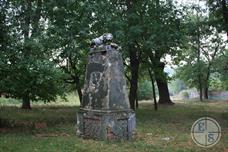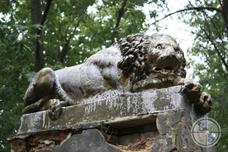Shpikov
Shpikov, 2008, 2012
For the first time the village bacon mentioned in documents from 1507, when it became the owner of Bratslav landlord Simon Cat. The name of the village was due to ... pigs! Local fat - fat - very everyone liked ... The second option - in the village there was a high concentration of foreign intelligence agents.
In 1582 bacon, which was then called Oshpekov, along with other settlements acquired Prince Ostrog. Subsequently, the village owned by Zamoyski, Kontsepolskie, Potocki, in the second half of the XVIII century. Bacon went to the landlords Sveykovskim.
At the beginning of 1860 HGG. Bacon became a parish center as part of Bratslav County Podolia.
In 1923 Shpikovskaya town was transformed into an area and bacon became a district center. In the postwar years, bacon began to fade, especially since in 1962 the regional center was transferred to Tulchin.
In 1582 bacon, which was then called Oshpekov, along with other settlements acquired Prince Ostrog. Subsequently, the village owned by Zamoyski, Kontsepolskie, Potocki, in the second half of the XVIII century. Bacon went to the landlords Sveykovskim.
At the beginning of 1860 HGG. Bacon became a parish center as part of Bratslav County Podolia.
In 1923 Shpikovskaya town was transformed into an area and bacon became a district center. In the postwar years, bacon began to fade, especially since in 1962 the regional center was transferred to Tulchin.
In 1765, the census takers recorded in the village of 21 Jews who were assigned to the community of the village of Krasne (now Red village).
Shpikovskie Jews rented in the nearby village Shpikovke (downstream of the river of the same name) wooden inn with a distillery, and two watermills.
In 1852, according to official figures here including 4-artisan Christian (all visitors) and the 24 artisan-Jew, of which 16 were attributed to other boroughs.
A new page in the life of Shpikova opened with a settlement here Hasidic Tzaddikim of "Chernobyl" dynasty. In 1885, p. Menahem Nahum Tversky called Hasidim p. Nuhimtse, I was invited to the fat, to bless the new Jewish cemetery. Do that Jews were buried in the cemetery in the Pechora. According to Hasidic rebbe legend toured the cemetery only three times instead of the four, since he felt bad, and he had no strength left to continue the tour.
In general, lard remained affluent borough: only in 1897, the Jews managed to pave the shopping streets, using his means of box collection. About twenty Jewish owned shops and a variety of shops, the vast majority of them provide for themselves trade on local markets, which were held every two weeks.
During the Civil War in the town Jewish militia to protect its inhabitants from the robbery was created. After the assassination of the police commander of the bandits E.I.Yanko (he was the owner of the mill), the police broke up.
Shpikovskie Jews rented in the nearby village Shpikovke (downstream of the river of the same name) wooden inn with a distillery, and two watermills.
In 1852, according to official figures here including 4-artisan Christian (all visitors) and the 24 artisan-Jew, of which 16 were attributed to other boroughs.
A new page in the life of Shpikova opened with a settlement here Hasidic Tzaddikim of "Chernobyl" dynasty. In 1885, p. Menahem Nahum Tversky called Hasidim p. Nuhimtse, I was invited to the fat, to bless the new Jewish cemetery. Do that Jews were buried in the cemetery in the Pechora. According to Hasidic rebbe legend toured the cemetery only three times instead of the four, since he felt bad, and he had no strength left to continue the tour.
In general, lard remained affluent borough: only in 1897, the Jews managed to pave the shopping streets, using his means of box collection. About twenty Jewish owned shops and a variety of shops, the vast majority of them provide for themselves trade on local markets, which were held every two weeks.
During the Civil War in the town Jewish militia to protect its inhabitants from the robbery was created. After the assassination of the police commander of the bandits E.I.Yanko (he was the owner of the mill), the police broke up.
In Shpikove it was not, fortunately, the worst pogroms in their manifestation, but passing through the place of the military and the guerrillas necessarily rob the Jews.
By the end of the war, both shpikovskih Hasidic "court" had ceased to exist. From epidemics died p. Shalom Yosef with his wife and son, as well as Hawa, a widow p. Mordecai, and her daughter Mira. The surviving members of the family left the bacon.
At the beginning of 1920 Soviet power was established in the province. Like many small towns affected by the Civil War, the Jewish orphanage and dispensary were organized in Shpikove.
Twenties dramatically changed the social and professional structure of the Jewish population. In 1928, in the village there were 114 Jewish workers (about 25% of all workers) and 37 employees (8%), 89 craftsmen (more than 27% of the total number of handicraftsmen) and 70 traders (less than 22%). According to official data, in 1928 there were 25 unemployed Shpikove Jews. In search of work and educational opportunities for Jewish youth was away from the village in the larger cities. The Jewish population continued to decline thereafter.
Before the war, there lived 895 Jews (18% of the population).
By the end of the war, both shpikovskih Hasidic "court" had ceased to exist. From epidemics died p. Shalom Yosef with his wife and son, as well as Hawa, a widow p. Mordecai, and her daughter Mira. The surviving members of the family left the bacon.
At the beginning of 1920 Soviet power was established in the province. Like many small towns affected by the Civil War, the Jewish orphanage and dispensary were organized in Shpikove.
Twenties dramatically changed the social and professional structure of the Jewish population. In 1928, in the village there were 114 Jewish workers (about 25% of all workers) and 37 employees (8%), 89 craftsmen (more than 27% of the total number of handicraftsmen) and 70 traders (less than 22%). According to official data, in 1928 there were 25 unemployed Shpikove Jews. In search of work and educational opportunities for Jewish youth was away from the village in the larger cities. The Jewish population continued to decline thereafter.
Before the war, there lived 895 Jews (18% of the population).
July 22, 1941 bacon occupied by Nazi troops entered the town area of the Romanian occupation of Transnistria. ghetto was arranged for the Jews.
December 8, 1941 by order of the governor of Transnistria Jews Aleksyanu Shpikova number of 848 persons were deported to the village Rogozna that on the bank of the Bug, slightly higher than the Pechora. In the town left 27 Jews.
In Rogozne shpikovskie Jews were placed in the clubhouse. In August 1942, from Rogozny they were transferred to the concentration camp in Pechora.
According to official data, 539 Jews were killed Pechera Shpikovskogo area.
After the war, the population decreased Shpikova particularly hard - after losing Shpikovym in 1962, the regional center status.
In 2012, the Jews did not live in Shpikove.
V.Lukin, "100 Jewish settlements in Ukraine"
December 8, 1941 by order of the governor of Transnistria Jews Aleksyanu Shpikova number of 848 persons were deported to the village Rogozna that on the bank of the Bug, slightly higher than the Pechora. In the town left 27 Jews.
In Rogozne shpikovskie Jews were placed in the clubhouse. In August 1942, from Rogozny they were transferred to the concentration camp in Pechora.
According to official data, 539 Jews were killed Pechera Shpikovskogo area.
After the war, the population decreased Shpikova particularly hard - after losing Shpikovym in 1962, the regional center status.
In 2012, the Jews did not live in Shpikove.
V.Lukin, "100 Jewish settlements in Ukraine"
Vinnitsa Region

My shtetl
My shtetl
Jewish towns of Ukraine
Jewish towns of Ukraine
